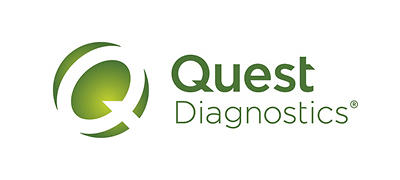The presence of a specific antibody is highly suggestive of the associated autoimmune disease. However, these antibodies are not completely specific for a particular disease; thus, results need to be interpreted in context of the clinical information and considering the following antibody prevalence.
Prevalence of Tier 1 Antibodies8-11
- Double-stranded DNA (dsDNA) antibodies are present in 57% to 62% of systemic lupus erythematosus (SLE) cases, 10% to 43% of polymyositis, 11% to 20% of Sjögren syndrome, 8% of systemic sclerosis (scleroderma), and 0% to 8% of mixed connective tissue disease (MCTD).
- Chromatin antibody is present in >80% of MCTD cases, 37% to 73% of SLE, 14% of systemic sclerosis, 12% of Sjögren syndrome, and 8% of polymyositis.
- Ribonucleoprotein (RNP) antibodies are present in >80% of MCTD cases, 22% to 48% of SLE, 14% of systemic sclerosis, 12% of Sjögren syndrome, and 8% of polymyositis.
- Sm/RNP antibodies are present in 54% to 94% of MCTD cases, 30% of SLE, 4% of systemic sclerosis, and 9% of Sjögren syndrome and polymyositis.
- Sm antibody is present in 20% to 30% of SLE cases, 8% of MCTD, 10% of polymyositis, 0% of systemic sclerosis, and 4% of Sjögren syndrome.
- Double-stranded DNA, chromatin, ribonucleoprotein, Sm/RNP complex, and Sm antibodies are also present in <2% of normal blood donors.
Prevalence of Tier 2 Antibodies10-11
- SS-A and SS-B antibodies are present in >80% of Sjögren syndrome cases and are considered a diagnostic indicator for this autoimmune disease. However, these antibodies are also present in other autoimmune disorders. SS-A antibodies are seen in 33% to 52% of SLE cases, 42% of polymyositis, 23% of systemic sclerosis (scleroderma), and 13% of MCTD. SS-B antibody is present in 13% to 27% of SLE cases, 5% of systemic sclerosis, <2% of polymyositis, and <2% of MCTD.
- Scl-70 antibody is present in 16% of systemic sclerosis cases, 7% of MCTD (especially those with features of systemic sclerosis), 2% to 3% of SLE, <2% of Sjögren syndrome, and <2% of polymyositis.
- Jo-1 antibody is present in 17% of polymyositis cases, 7% of MCTD (especially in those with features of muscle inflammation), <2% of SLE, Sjögren syndrome, and systemic sclerosis.
Tier 2 antibodies are also present in <2% of normal blood donors.
Prevalence of Tier 3 Antibodies10-13
- Centromere B antibody is present in 27% of systemic sclerosis (scleroderma) cases, 66% of CREST syndrome (calcinosis, Raynaud phenomenon, esophageal dysmotility, sclerodactyly, and telangiectasia), 3% to 12% of SLE, 7% of MCTD (typically with features of polymyositis), and <2% of Sjögren syndrome, polymyositis, and normal blood donors.
- Ribosomal P antibody is present in 9% to 30% of SLE cases (often with neurological manifestations), 7% of MCTD, and <2% of Sjögren syndrome, systemic sclerosis, polymyositis, and normal blood donors.
Note: The prevalence levels listed above may vary with the population studied and methods used.7 Values given are for general guidance.





